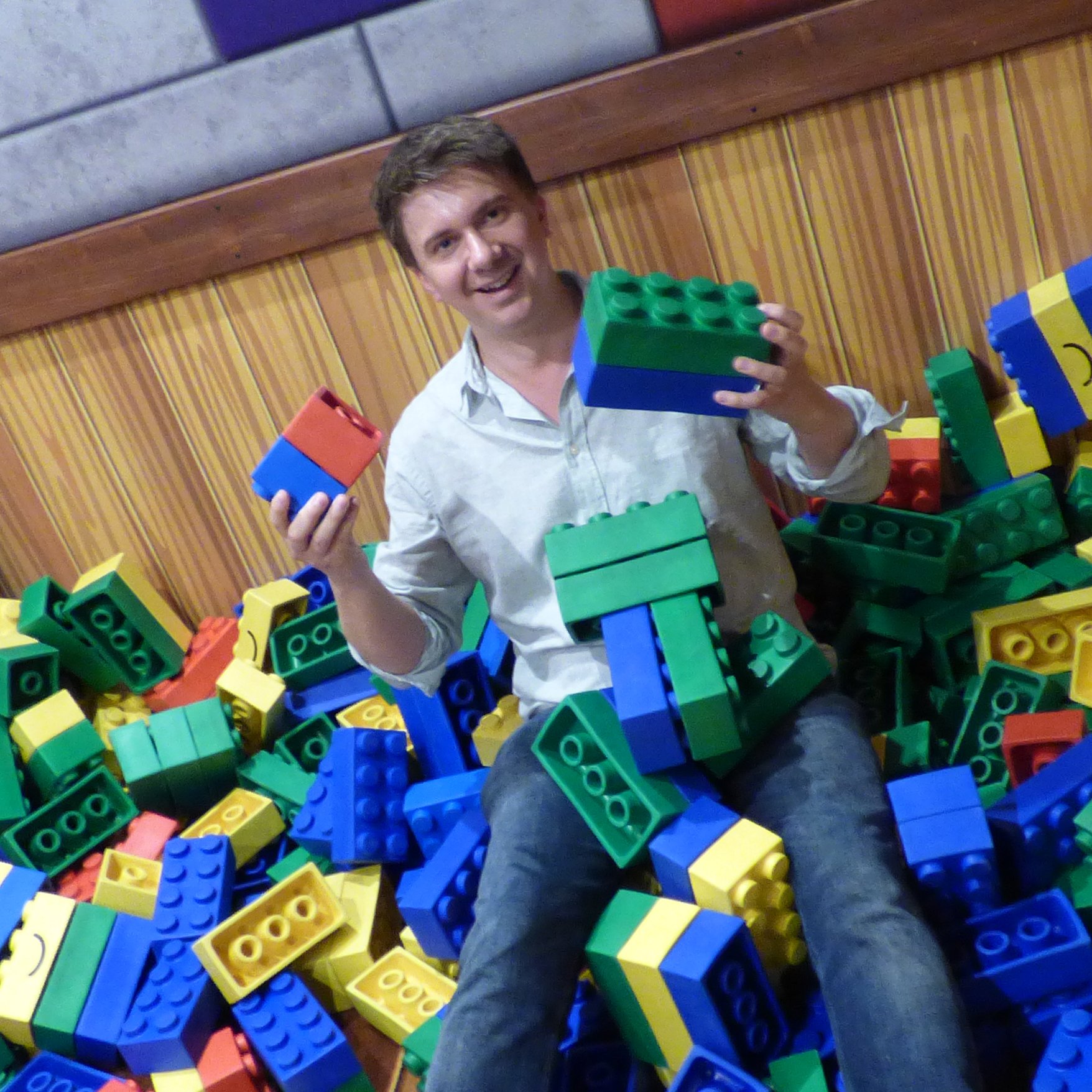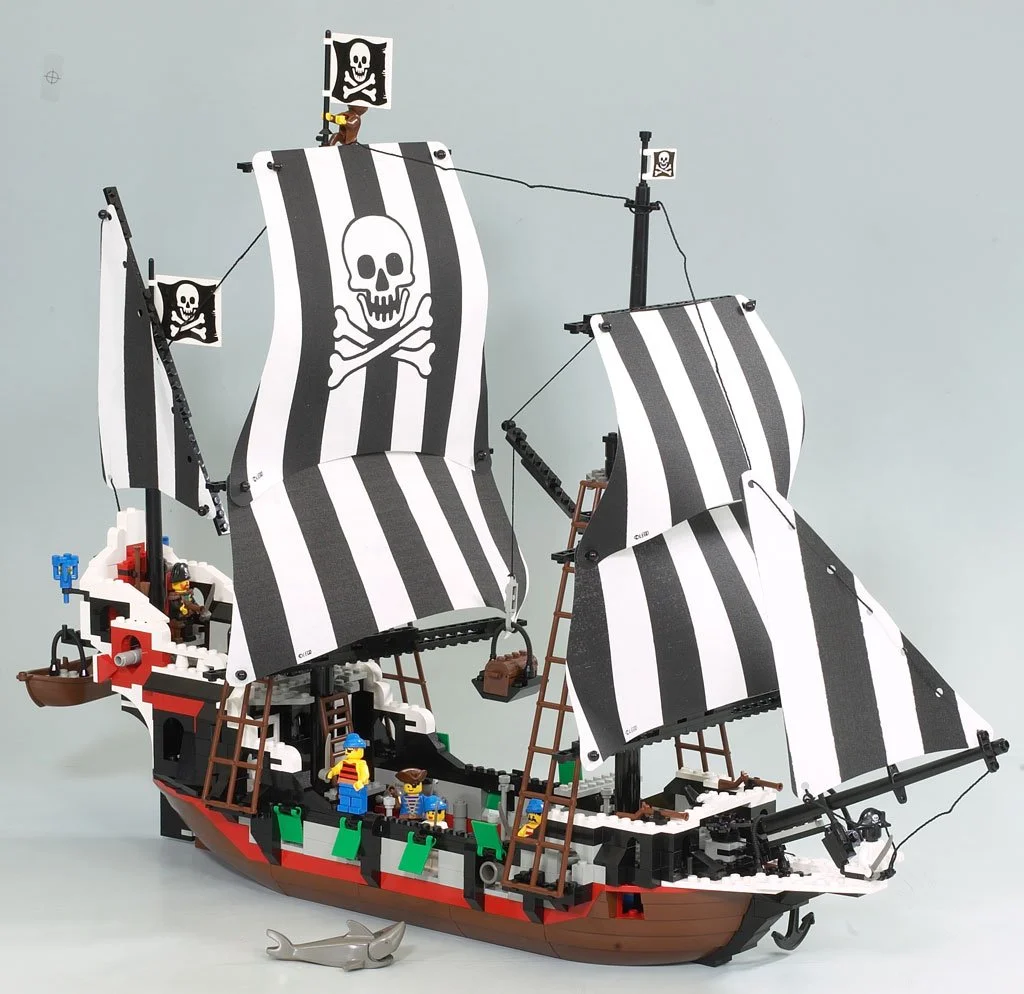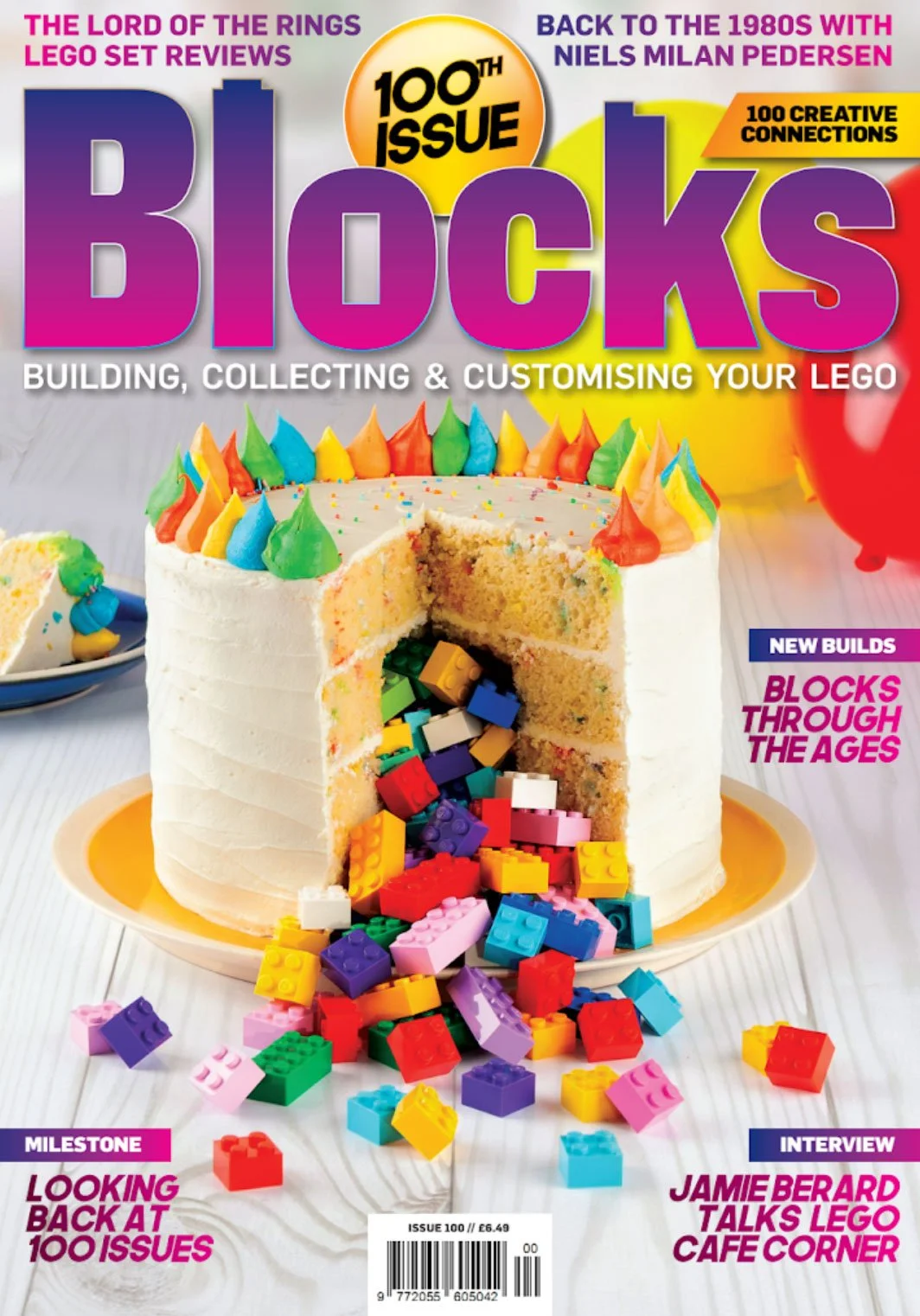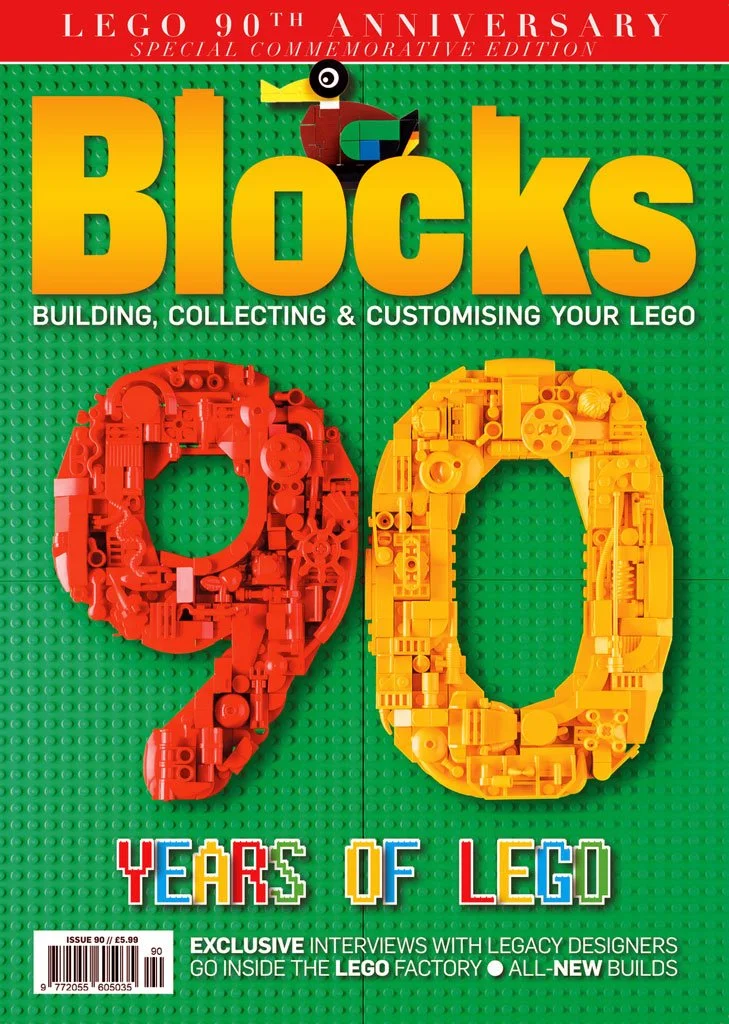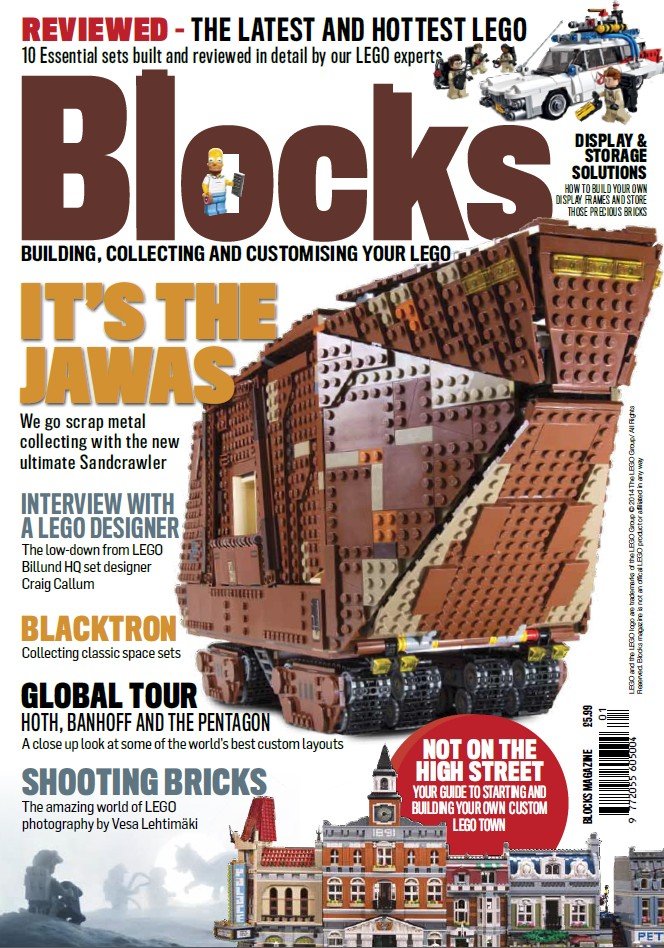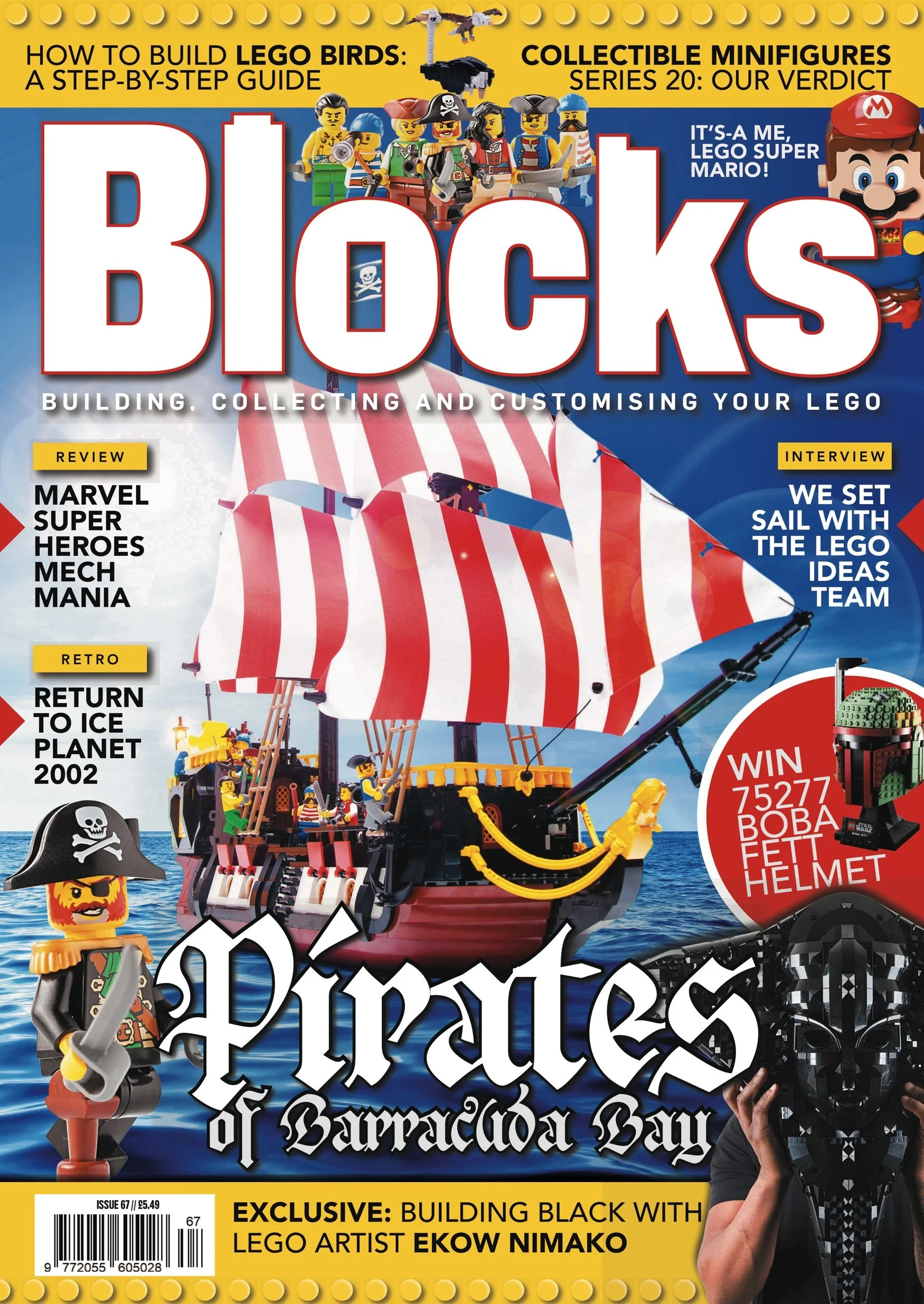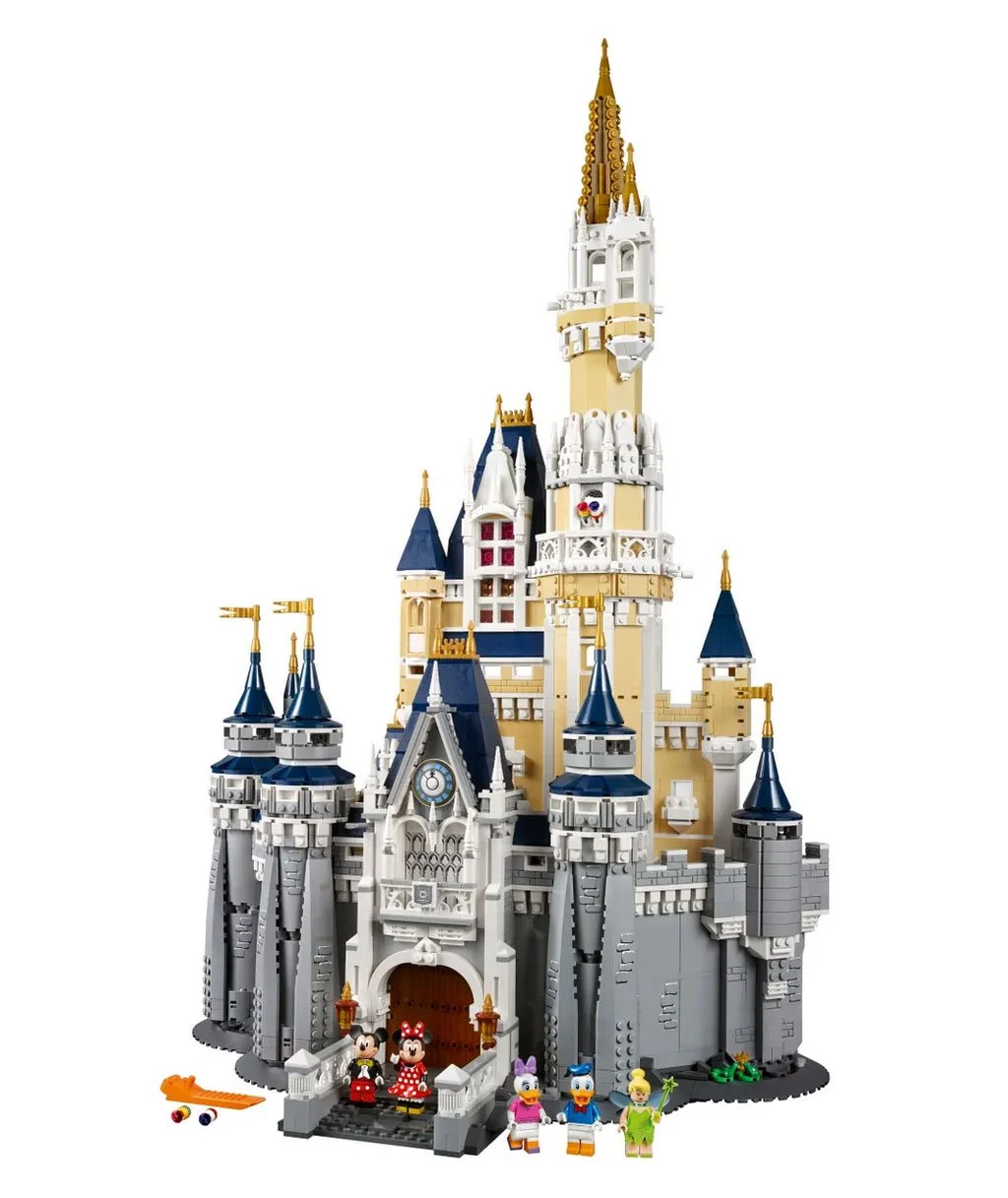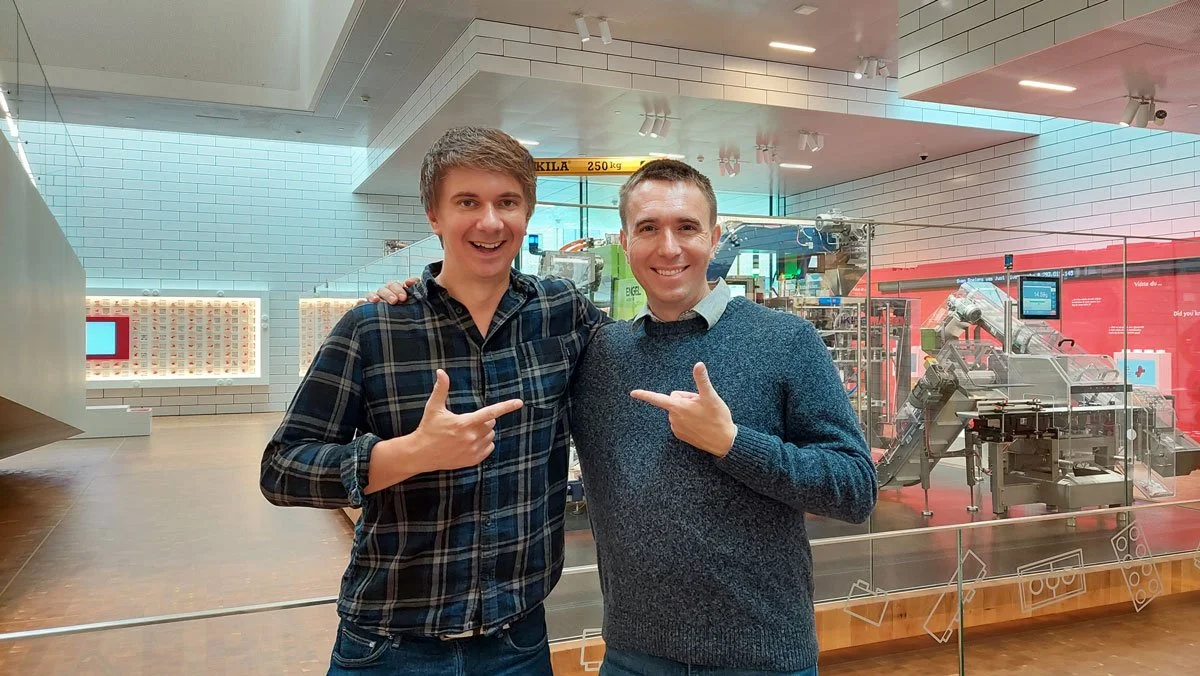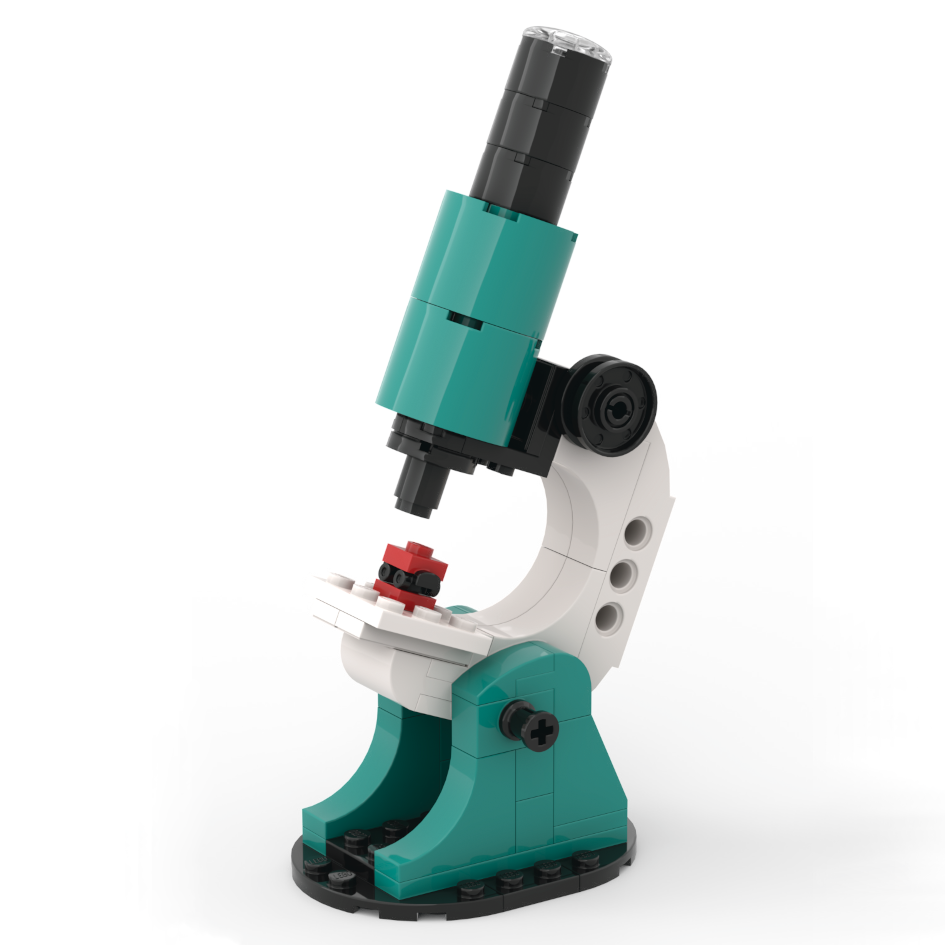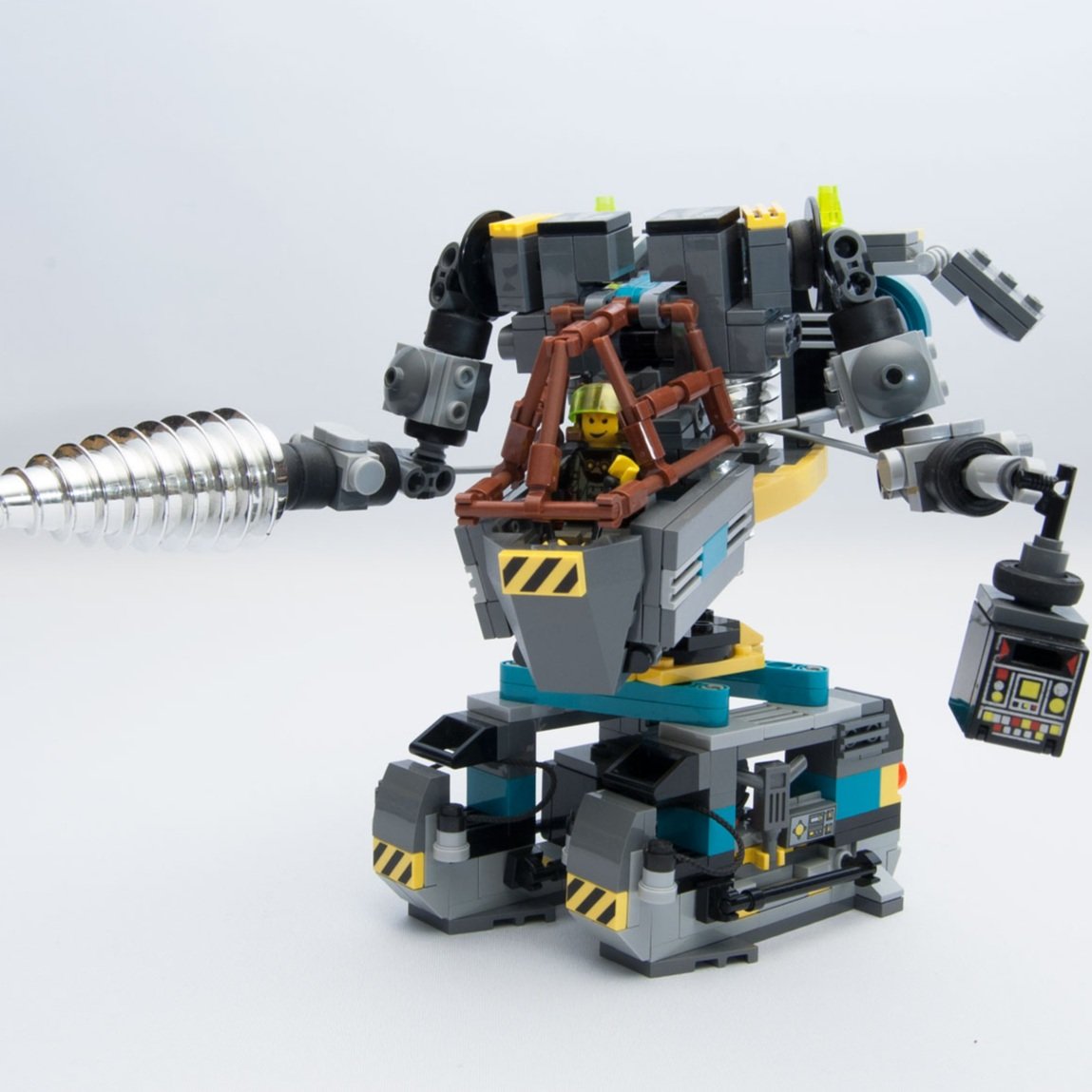100 Issues of LEGO Love: A Chat with Graham E. Hancock of Blocks Magazine
/Blocks Magazine is celebrating 100 issues, so today we thought it would be a great time to highlight one of the few other long-form LEGO storytellers in the community, Graham E. Hancock. He is Blocks’ Editor and has been working with the publication for 92 issues. So let’s get this interview started to congratulate the team on this milestone edition and welcome Graham as the latest guest of our own BrickNerd community.
Ann: Hi Graham! We're excited to interview a passionate LEGO expert who can’t remember life without the brick! Please, tell us a bit about yourself.
Graham: Thank you so much, Ann, it’s really lovely to be invited by BrickNerd for a chat. I’m based in London and as you say, I have been a LEGO fan for my entire life. I was almost at risk of a dark age, but thankfully LEGO Star Wars came along and put a stop to that. As so many of us know, one theme is just a gateway to so many other themes and through Star Wars I found myself collecting modern City sets, modular buildings, other big, fancy sets, and much more besides…
Ann: What did your passion for LEGO start with?
Graham: Pirates, arrrgh! I absolutely loved LEGO Pirates as a child. There was a strange children’s TV show here in the UK about pirates that I have very hazy memories of, we took a vacation to Disney World where Pirates of the Caribbean blew my mind, and LEGO Pirates fit into this general fascination. I had very little interest in the actual history of pirates—I was very much into the action-adventure vibe and storytelling possibilities.
I was lucky enough to be gifted many LEGO Pirates sets for Christmases and birthdays, so the living room would very often become the sea, and the various ships and islands would be spread across it. Then there’d be epic battles with lots of LEGO cannonballs flying everywhere!
Ann: Talking about Blocks, congratulations on your 100th issue! We know how much hard work goes into long-form storytelling. What have you included in this special issue to celebrate the occasion?
Graham: Because Blocks is for true LEGO fans, we wanted to interview a true LEGO fan for this special issue, so we spoke to Jamie Berard about his journey from a childhood passion to adult fandom, to becoming a LEGO designer then going on to become a design manager, and now being a famous face on LEGO Masters.
We also wanted to acknowledge the great history of LEGO sets from the good old days, so we have an interview with Niels Milan Pedersen and he shares some early sketches from when he was developing elements for Pirates.
I challenged Simon Pickard, our resident build expert, to come up with 100 creative ways to connect LEGO bricks – and he really delivered! While BrickNerd readers will recognize some of them, I guarantee that there are at least a few that will be new. Hopefully, these tips and tricks will come in handy for readers’ next creations.
There are lots more in Issue 100 too, but those are some of the highlights!
Ann: What does the creative work on the magazine mean to you? What drives you to share your love of LEGO with like-minded creators?
Graham: I’ve always had the drive to write and tell stories. As a child, I would make little books and magazines that I’d staple together. I think one ‘book’ that I made was a bunch of pages hole-punched and put into a LEGOLAND ring binder.
When I first saw Blocks Magazine I immediately realized the potential that this format offers; there are really unique and creative ways to create content in print that I wanted to explore. I also felt at the time that a lot of the content around the LEGO hobby was written from a very fan-centric place, without considering the context of some of the LEGO Group’s decisions. The thing I was keen to do was set things in context so that the fan community could at least understand why the LEGO Group might do certain things the way it does.
Having worked on the magazine for eight years now (which has gone by really quickly), the thing that drives me is to deliver something that adds value to the fan community. To that end we’re currently working on a full redesign of the magazine, which will really freshen things up – I am very excited for when we share that later this year.
Ann: We recognize and celebrate that passion and dedication here at BrickNerd. 100 issues over eight years is such a big milestone for the magazine! Can you tell us a bit about the history of Blocks?
Graham: It feels like a big event for us, that’s for sure. No one is quite sure where the time went! To that end, we do have a nice retrospective feature in Issue 100 where we pick out some of our favorite issues and reveal a little about how we created them or how they represent an evolution of the magazine.
Blocks Magazine Pilot Issue
The potted history is that Blocks Magazine launched in 2014; it was created by Mark Guest (the editor), Kev Leaper, and Will Holman (the publishers). I remember seeing the first issue in WHSmith, the UK’s main magazine retailer, and being so pleased to see a nice glossy magazine for LEGO fans.
A few months later, a new creative team was needed for the magazine and at that point, I joined Blocks, along with Rob Paton, Daniel Konstanski, and Chris Wharfe. Simon Pickard was already involved at this point (in fact, he has been involved with the magazine since the pilot issue). With the help of some excellent contributors, that group of people really set the direction and tone of what Blocks would be.
I remember feeling really lucky when I had my first conversations with the rest of the team because it was apparent that we all very much had the same goal, which was to deliver the very best magazine we could each month, at the highest standard possible. We found a nice way of ensuring that the content in the magazine would cover the different types of LEGO fans—builders, collectors, fans of modern themes, nostalgic fans, toy photographers, etc.
A few years ago Silverback Publishing acquired Blocks Magazine and it was a great change at the right moment. They put a strategy in place so that during the pandemic we could keep publishing (some other magazines much bigger than Blocks actually paused printing or went bi-monthly) and have been very supportive of everything we do.
Ann: It always takes a village, doesn’t it? There are a lot of great reoccurring features in the magazine. Can you tell us your favorite?
Graham: It is so hard to choose favourites! “Mod Squad” is great because that one encourages you to take a set from your collection and upgrade it. Speaking from experience, it’s often daunting for a ‘non-builder’ to take the plunge and build creatively, so Mod Squad provides an accessible way to do that. It also adds more value to a set because instead of just building it and popping it on a shelf, you get to continue to enjoy it as you enhance it.
I really love “Technique” because Simon always surprises me with his creativity and ability to find new ways to connect things. That’s a feature that has been running for a really long time and we’re currently planning a new version of it. When we launch the refreshed version, it will provide even clearer tutorials for how to take interesting (and sometimes challenging) methods of using elements and incorporate them into your builds.
As for the features that I write, I love the interviews because they’re so varied. One month I can be speaking to a professor from the University of Oxford about Ancient Rome, another month the producer of LEGO Masters can be explaining how a TV production schedule works, and another month an animation expert is giving me a rundown of Looney Tunes. You would never expect to get such a variety of topics working on a LEGO magazine, but as we fans know, the brick touches just about everything at this point.
Ann: The variety of topics and interests is what makes the LEGO community so vast and interesting. I’m curious, which issues are the most special for you?
Graham: There are a few that spring to mind. The most recent one is our “90 Years of LEGO” special, which worked out very well as Issue 90 of the magazine that launched during the LEGO Group’s 90th anniversary. I felt that for the anniversary, the content should be focused on the company’s past, so we conducted interviews with designers who worked in Billund in the 1980s and 1990s. Of course, that misses out on the 50 years prior to that, so Daniel Konstanski (author of The Secret Life of LEGO Bricks) went through the LEGO archives to find fascinating artifacts to talk about and built a lovely minifigure scale replica of the old woodworking shop.
Our issues for the different LEGO movies are also special to me as they offered an opportunity to do something quite different. I really love movies, so essentially I was able to do some film journalism alongside the LEGO stuff. For some of these films, there wasn’t a detailed “making of” book, so our magazine offers the most comprehensive resource to learn more about how they came together. What really capped these off though were Daniel’s build projects; his Ninjago City from Issue 36 is a thing of beauty.
I’ll choose just one more and that’s Issue 67. When LEGO Ideas sent a copy of 21322 Pirates of Barracuda Bay to me to review, I was looking everywhere in the model for flaws. I was determined that, as a big LEGO Pirates fan, I couldn’t give it a completely glowing review… everyone would just assume I was getting all misty-eyed. It is the best set I’ve ever built though; adult standard techniques used to replicate a classic set from 1989, the ability to reconfigure it in two different ways that both work… it’s absolutely exceptional. We did a lovely cover with that model and had a great interview with the designers.
Ann: One of my favorite parts of Blocks is that you like to share inspirational stories with your readers. Do you have any stories that are meaningful to you or that you are exceptionally proud of writing?
Graham: This is another tricky one, but I’ll probably go all the way back to Issue 15 and say the prosthetic that was inspired by LEGO bricks. There are ways that LEGO bricks are used in the real world or serve as inspiration for an idea in the real world that really show how our hobby can go even further than just creativity within the System. We can take the ideas behind the bricks and apply them to the world around us and benefit our communities.
In this particular case, Carlos Arturo Torres wanted to create a prosthetic that was suitable for children living with limb differences. Carlos thought about the way children know their own needs best and need to be able to customize their own prosthetics, so he came up with a prototype to demonstrate how you could achieve this.
I’ve adapted that particular feature for a chapter in my book, LEGO Heroes, that’s coming out in May. Most of the chapters are completely new for the book, but that was one that illustrates the LEGO idea so perfectly that it made sense to include it.
Ann: Do you build much yourself? I know you have mentioned enjoying organizing your collection of LEGO sets. What are your favorite building themes?
Graham: I’m not entirely sure it’s the organizing part of my collection that I enjoy! My favourite theme is Pirates because as I mentioned it was so special to my childhood. Star Wars is one that I must love because I’m still buying the sets… and to be fair, the team is pulling out some nice surprises like 75313 AT-AT despite the theme running for more than 20 years.
Working on Blocks Magazine has been dangerous for me as I am compelled to pay attention to many themes I overlooked, which means I collect more sets and themes than I probably otherwise would. Monkie Kid has been excellent, the Disney theme park sets are great (I hope we can get more minifigure scale ones) and Ideas throws up some fabulous things.
The short answer is; I have too many favourite themes!
Ann: Are you involved in your local LEGO community at all? Do you participate in LEGO conventions and exhibitions?
Graham: Obviously, it was a strange old world for a few years with all of the physical conventions and exhibitions on hold. During that unusual period I was involved in Bricks at Home, a virtual event that Brick Alley and London AFOLs teamed up on, during which I interviewed builders on a livestream about their creations.
I love going to events to actually see people in person and to admire builds that I have only seen online, or hopefully haven’t seen at all. I’m going to be at Bricktastic in Manchester, UK soon and I’m hoping to make it out to Skærbæk this year.
One of the challenges with the magazine’s monthly deadlines is that there’s always a deadline approaching, so sometimes despite very much wanting to be at a certain event, it doesn’t work out in terms of timing. This is also true of my creative building – despite having taken tentative steps to build things myself a few times, my creative energy tends to get poured into Blocks, so build projects remain on the drawing board or never get beyond half finished.
Graham E. Hancock and Daniel Konstanski at the LEGO House in Billund, Denmark.
Ann: Would you like to tell about any other hobbies and interests outside of LEGO?
Graham: I really enjoy stand-up comedy, and living in London is perfect for that. In fact, if any international readers visit London, I thoroughly recommend catching some stand-up if you have time. It costs a lot less for a ticket than a West End show and you can see some really high-quality comics in some really intimate venues. The cinema’s also a big interest of mine and I love to travel. It’s a good job I don’t have a dating profile because that sounds very generic!
Ann: Huge thanks for the interview, Graham! Congratulations again, and we wish you and the team another successful 100 issues of inspiration and creativity!
Do you subscribe to Blocks Magazine? What are some of your favorite stories and features from its first 100 issues? Let us know in the comments below.
Do you want to help BrickNerd continue publishing articles like this one? Become a top patron like Charlie Stephens, Marc & Liz Puleo, Paige Mueller, Rob Klingberg from Brickstuff, John & Joshua Hanlon from Beyond the Brick, Megan Lum, and Andy Price to show your support, get early access, exclusive swag and more.

